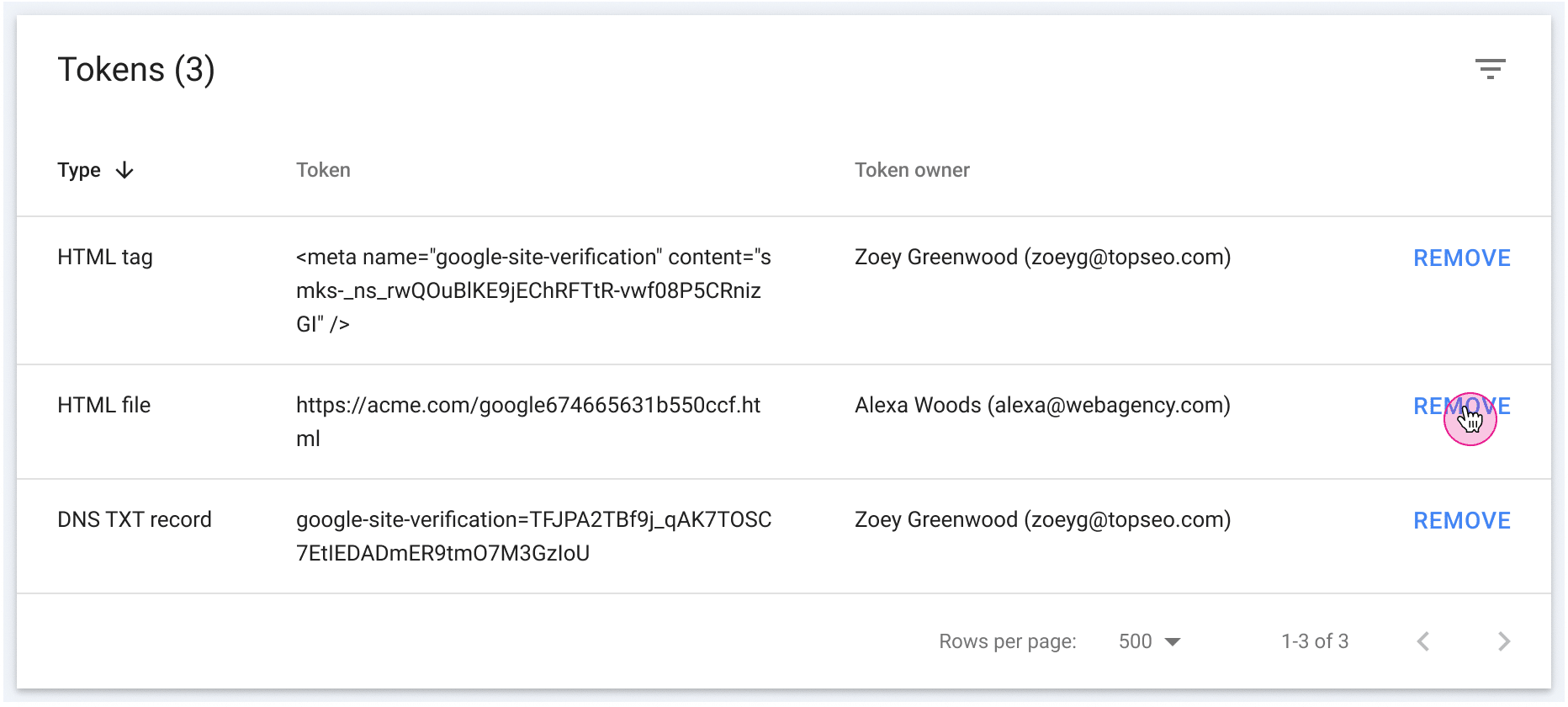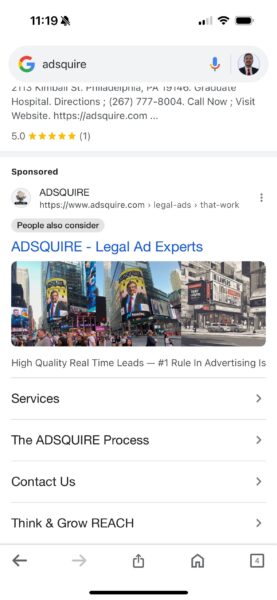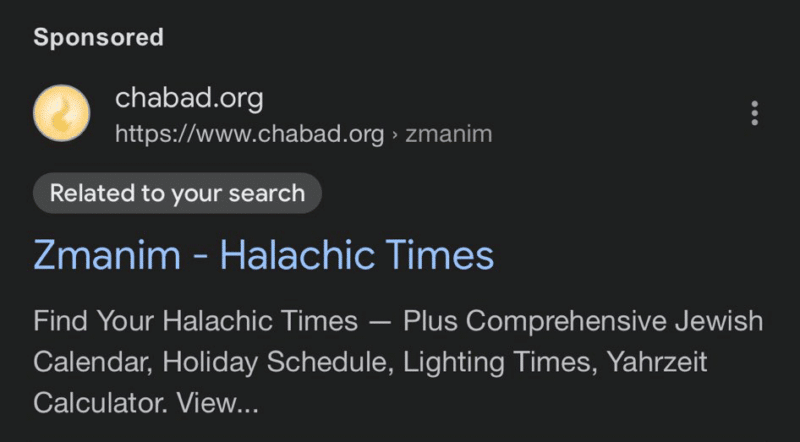Want to rank highly in 2024 and beyond? Then, you must create what Google calls “helpful, reliable, people-first content.”
In this article, I will outline a process that shows you exactly how to do that and provide a simple template you can fill out to take your content to the next level.
Spambusters
At the time of writing, Google is doing some major spring cleaning to tackle some of the spammy, low-quality content littering the search results.
Unsurprisingly, much content is developed from an SEO perspective. Google’s latest update is designed to help push down some of this SEO-first content and surface people-first content.
Our goal here should be to create well-optimized, people-first content. Any savvy marketer knows you build trust with your prospects by being helpful and sharing.
A people-first content process
Google has a help page that provides several questions you can use to review your existing content to ensure it is helpful, reliable and people-first. Unfortunately (and ironically), this page is not helpful when creating new content.
In addition, I have created a simple process we use at my agency for planning, writing and reviewing new content that is people-first and ticks all of Google’s qualitative boxes.
To simplify following the steps, here’s a simple template you can fill out as you work through the article. Grab a copy of this first.
People-first content: A writing process
What follows is a six-step process for creating SEO-friendly content that is people first.
As a side note, while Google is at war with low-quality generic content, don’t feel like you can’t use AI tools to help. Just ensure you use these generative AI tools as an SEO assistant rather than create the whole article for you.
Step 1: Goals
What is your goal for this content? How does this fit into your overall SEO strategy and SEO planning?
Creating a well-considered goal is essential. The goal is what you are aiming at. If you are off the mark here, you will miss the target despite your efforts.
To strengthen goals, follow a simple process called “The Five Whys.” State your initial goal, then ask “why” up to five times until you have strengthened and clearly articulated your goals.
Example
- Initial goal: Write a blog post about our eco-friendly kitchen products.
- Why? To improve our website’s ranking on Google.
- First analysis: I want to improve our website’s ranking on Google.
- Why? Because a higher ranking will lead to more organic traffic to our site.
- Second analysis: I want more organic traffic.
- Why? Because increased traffic can lead to more customer engagement and brand recognition.
- Third analysis: I want increased customer engagement and brand recognition.
- Why? This engagement will likely lead to higher sales and customer loyalty.
- Fourth analysis: I want higher sales and customer loyalty.
- Why? With increased sales and a loyal customer base, we can further our mission to promote sustainable living and make a larger positive environmental impact.
- Revised goal: Our objective is to create an informative blog post about eco-friendly kitchen products that educate users about kitchen sustainability. This will help us drive organic traffic to the site, increasing engagement and leads.
Action item
Outline your goals and refine them using The Five Whys technique. Incorporate SMART SEO goals to refine and articulate the objectives.
Step 2: Reframing for your audience
You know what you want, but Google does not care about your goals, only the satisfaction of its users. You must align your objectives with helping users while connecting them to your business and marketing mission.
To do this, you can employ “reframing.” Based on Ann Handley’s book “Everybody Writes,” it’s a tool for shifting perspectives and better serving our audience in marketing.
First, you should be clear on who your audience is. Google spells this out:
“Do you have an existing or intended audience for your business or site that would find the content useful if they came directly to you?”
Take your initial goal and look at this from your audience’s perspective. Ask, “So what?” and answer with “Because…” Do this exercise up to five times.
Example
Your goal: Our objective is to create an informative blog post about eco-friendly kitchen products to help generate leads for our sustainable kitchen products.
- So what? We all need to learn how to be sustainable in all areas of our lives to help prevent global warming and ensure the planet’s safety for future generations.
- So what? Learning about sustainability in the kitchen can help you reduce your environmental footprint, lead to healthier living and save money – good for you and good for your children.
Final goal: The article will provide a detailed look at how choosing eco-friendly kitchen products leads to a healthier lifestyle, cost savings and benefits for the planet. It encourages readers to make sustainable choices in their daily lives and shows them how to do that with our products.
Action item
Define your audience, query your goal, reframe it from the customer’s perspective and explain how it helps them. Fill it out in the supplied template. Ensure you can succinctly answer how this helps the reader.
Step 3: Demonstrate experience and expertise
The content you create should establish the author’s experience and expertise in a verifiable way. Google spells this out for us with the E-E-A-T and, more specifically, the requirement for “helpful, reliable, people-first content.”
What makes something reliable? Experience, expertise and credibility are good starting points.
Below are key points to remember based on Google’s documentation:
Experience
Your content should demonstrate first-hand experience and expertise. You should show a depth of knowledge by using a product or service or visiting a place. From a business perspective, you should clearly illustrate that you have experience.
Expertise
The content should demonstrate expertise or link to a page that does. For instance, if your business has accreditations, ensure they are visible on the site. If the author has specific expertise, ensure this is detailed on an author page.
Get your facts straight
Using data to illustrate your expertise is helpful, but ensure that any facts you use are 100% correct, referenced and do not contain unsubstantiated claims.
‘About us’ and author pages
Your site should feature “About us” and author pages that expand upon the credibility of the business and the individual authors. Link to these from your content. Google mentions these pages specifically, so give it what it wants.
Action item
In the people-first content template, fill out the four expertise boxes covering experience, expertise, fact-checking and about us and author pages.
Step 4: Aim high
You should aim to create unique content that is different or better than elsewhere. Your overall SEO strategy is important here, as you want a reason to stand out from the crowd, and that should flow through your content marketing.
Google provides us with 12 points to review content quality. However, we can summarize these into six points that you can use to guide your content creation.
Data and examples
Identify data and examples that support your article. Include these, and be sure to cite them correctly. Remember, people love stats and having something makes your content linkable (which is still crucially important).
Add something to the discussion
Look for areas where you can add something new to the discussion, such as new research, reporting or analysis. This does not have to be complicated. Run a short survey, but add something new to the discussion to add value to your article. In a nutshell, don’t just say the same thing as everyone else!
Use clear titles
Create clear, descriptive, accurate and non-sensational titles summarizing the content. You can still optimize but do so sensibly. Always prioritize people over SEO.
State your sources and add commentary
When referencing other sources, add value. Avoid just rewriting or restating; try to add a unique spin to what is already there. Use your experience and expertise to do so. You are an expert on this topic; your opinion and experience here matter.
Focus on quality and make it easy to share
Ensure the content is well produced. Use AI tools here to help if you wish. Don’t take every recommendation. Keep your voice in the piece. Aim for something of the same quality you expect in a newspaper or other printed media.
Action item
Fill out page four of the template. Don’t worry about finding something for each of these but try to ensure you bring something new.
Dig deeper: Mastering content quality: The ultimate guide
Step 5: Write
In some respects, this is the easy bit. Once you have completed the research steps above, you will know the angle from which you are coming. I recommend copying your overall goal at the top of your document so you can use that as your North Star!
The steps you take now will vary depending on your own writing style, but the key here is that planning sets up success.
My approach is something like this:
- Decide on the format (blog post, list, stats, etc.).
- Outline bullet points of the sections.
- Work on a very rough first draft (just write – don’t stop to edit).
- Walk away for a few hours, at least.
- Write the second draft.
- Walk away and sleep on it.
- Review using Google’s question list.
- Write the third draft.
- Editor review.
- Tweak and publish.
I often think the most important aspect here is to sleep on it. If you can and if, like me, you are fitting in writing around running your business, then it can make sense to do the big steps over different days.
- Day 1: Plan and bullet points
- Day 2: Rough first draft
- Day 3: Second draft
- Day 4: Third draft, edits and publish
A key element for me is the sleeping on it factor. When you are writing like this, you are often trying to solve a problem and your planning and first drafts get you so far.
But then, when you sleep on it, your subconscious starts to work through all those little bits that are not quite there yet.
Then, when you work on your second and third drafts, you will strengthen the article so much more (and it is much easier).
Dig deeper: 25 tips to optimize your content for people and search engines
Step 6: Review
At this stage, if you want to be absolutely certain you have nailed this, you can revisit Google’s Helpful Content help page to self-assess your content.
Having conducted the planning process, this should be orders of magnitude easier. Starting your content creation with planning and ending with a qualitative review will strengthen your approach and improve your results.
Page experience and SEO
One last point of importance: the content should be housed on a site that provides a solid page experience.
- Your web design and SEO should be dialed in.
- You should have green lights on your Core Web Vitals.
- Your site should run over HTTPS.
- You should not show too many ads (if any, should you be a business selling services).
These are the basics, but Google does have a help page if you wish to dive in further.
Crafting people-first content: A blueprint for SEO success
While there is a lot of change and doomsaying at the moment, content marketing with SEO is still a viable tactic for authentic experts who can help the target audience.
Google has articulated what they are looking for. By carefully reviewing the help pages on E-E-A-T and creating helpful content, we can build a process that ensures we are aiming at exactly what Google is aiming at (that is, real SEO that stands the test of time).
This dogged focus on the end user is truly what marketing is all about and why Google is such a big company. Getting into this mindset and making it the heart of your SEO philosophy will only improve your results.
Be sure to determine some simple SEO KPIs to measure your success and keep focused on creating content that helps you while helping your audience.
Original source: https://searchengineland.com/writing-people-first-content-process-template-439636












